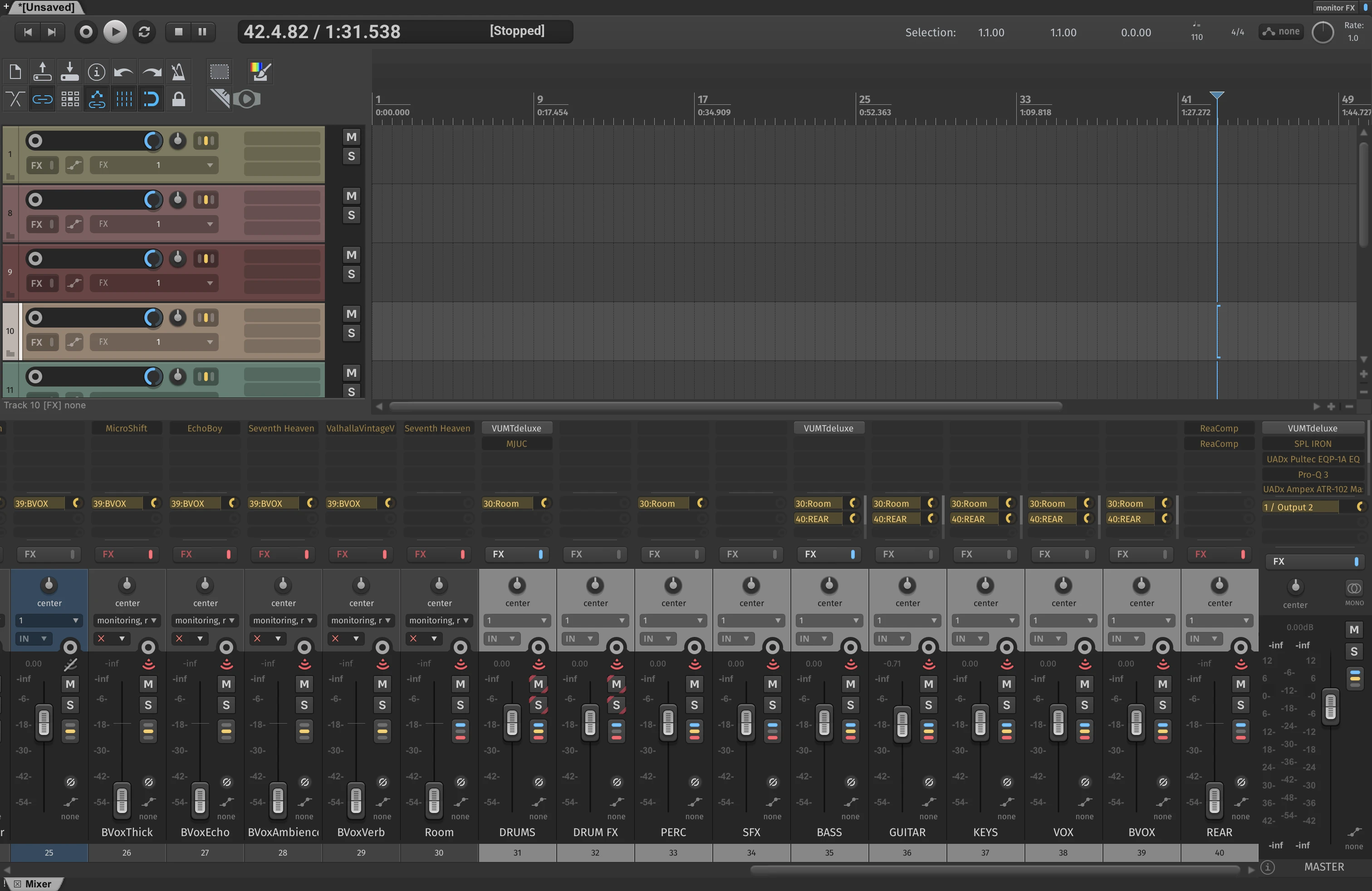Reaper productivity tips 3/3
Feb 28, 2025
This is the third of three posts sharing some of my productivity tips for the Reaper DAW. Check out the first and second.
7 - Install Rodilab Color Palette
Life's too short to fiddle around with complicated colour palettes. Do yourself a favour and install ReaPack and find Color palette from Rodilab.
8 - Get a single physical fader
For a while I had a nine-fader controller. It wasn't until I sold it and got a single motorized fader sitting right next to my mouse that I really started getting the value of a physical controller.
It is super handy for making mix small balance adjustments to single or multiple selected tracks and invaluable for writing automation.
9 - Use templates
I have two project templates I use in Reaper: one for tracking, or recording, and one for mixing. The one for tracking is a simple setup: I have inputs in the studio pre-mapped to input tracks in Reaper so I'm ready to go with a new project in just a moment.
More valuable though, is my mix template. I keep this updated all the time as I learn something new, start using a new technique or plugin, or whenever I notice I've stopped doing something I used to.
Here are some highlights from my mix template that I think might be useful for you.

The template sets up nine buss tracks for drums, drum effects, percussion, sound effects, bass, guitars, keyboards, main and backing vocals. I also have single empty audio tracks for each of these groups in my preferred colour scheme and I duplicate these to however many tracks I'll need for the project.
I have a simple master buss set up, with an SPL Iron compressor, a Pultec style EQ and a tape emulator. I sometimes add to this but I prefer to keep my default master buss simple.
Each group have a few effects sends. I don't always end up using all of these but I often do. Drum tracks have some parallel drive or distortion sends, as well as a few reverb sends and a crush track. Guitars have separate left and right echo sends for stereo widening, as well as reverbs and a subtle shimmer. Vocals have parallel compression, thickening (love that SoundToys Microshift), delay, echo and reverb tracks.
I also have a main reverb send that I use if I want to place all instruments in a room together for some subtle cohesion.
Last, but not least - I'm completely hooked on the Andrew Scheps Rear Buss technique, I find it adds a lot of weight and fullness to my mix that I'm not able to achieve without, so I naturally have this set up in my mix template too.